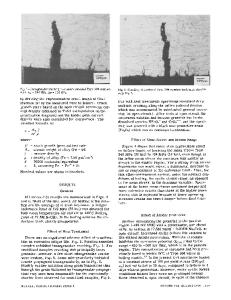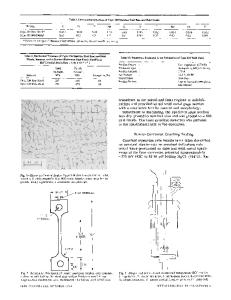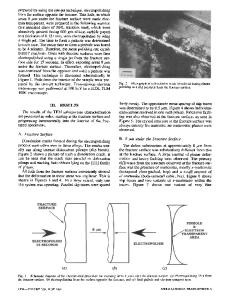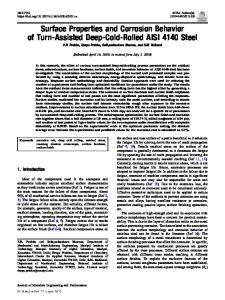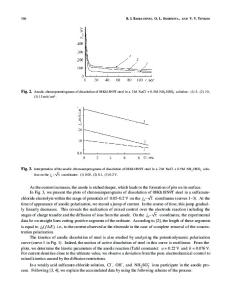Crevice Corrosion and Cracking Behavior of Cold Rolled Type 304 Stainless Steel in Chloride Environment
- PDF / 1,089,428 Bytes
- 6 Pages / 612 x 792 pts (letter) Page_size
- 73 Downloads / 353 Views
1226-II03-01
Crevice Corrosion and Cracking Behavior of Cold Rolled Type 304 Stainless Steel in Chloride Environment S.Kajikawa, Y.Isobe1 and M.Okido2 1 2
Material Engineering. R and D Department, DENSO CORPORATION, Kariya, Japan Department of Materials Science and Engineering, Graduate School of Engineering, Nagoya University, Nagoya, Japan
ABSTRACT In this study cold worked type304 stainless steel pipe with shot peening were used to investigate the corrosion property of high strength type304 stainless steel for automotive applications in a salt damage environment. A crevice was created between the outside of the pipe and an O-ring, and the pipe was applied stress by press fitting of another part. The corrosion property of the sample was evaluated in an automotive field test in Okinawa. Cracking from a corrosion pit was observed in the crevice. A crack generated at a corrosion pit was reproduced in a wet/dry cyclic corrosion test after one flash of artificial seawater. A cathodic charge test in artificial sea water was done. Similar cracking from a corrosion pit was observed on the sample after this test. Therefore, the cracking is presumed to be Hydrogen Embrittlement-Stress Corrosion Cracking㧔HE-SCC㧕.
INTRODUCTION Automotive corrosion environments are greatly affected by salt damage, including snowmelting agents in winter and sea salt particles in coastal areas [1]. In addition, since those environments are affected by the repetition of a wet atmosphere due to splashing water, etc. and a dry atmosphere due to the thermal load produced during driving, they are extremely severe conditions. On the other hand, from the requirement for the improvement of corrosion resistance, the amount of stainless steel used for automotive parts has recently been increasing, and, in particular, research into the use of work-hardened austenite stainless steel superior to corrosion resistance and workability has become very active [2]. However, the corrosion properties of work-hardened stainless steel have not been fully understood. In this study, as a result of an automotive field test using a vehicle with SUS304 pipes that were highly-strengthened by cold working, we found a singular corrosion. We analyzed this phenomenon in detail and tried to reproduce the phenomenon in a bench test of corrosion using artificial seawater. Furthermore, we conducted a cathodic charge test and examined this phenomenon. EXPERIMENTAL DETAILS SUS304 plates with the chemical composition shown in Table 1 were used for test samples, which were processed into cylindrical pipes (t1.5) by deep drawing and ironing.
Table 1. Chemical composition of type304 stainless steel (mass%) 㪚 㪇㪅 㪇㪉㪐 㪥㫀 㪏㪅 㪋㪋
㪪㫀 㪇㪅 㪉㪇 㪚㫉 㪈㪎㪅 㪏㪏
㪤㫅 㪇㪅 㪋㪊 㪘㫃 㪇㪅 㪇㪇㪌
㪧 㪇㪅 㪇㪇㪎 㪥 㪇㪅 㪇㪈㪌
㪪 㪇㪅 㪇㪇㪉 㪝㪼 㪙㪘㪣
A stainless steel cylinder was press-fitted into a pipe and then tensile stress was applied from the inside. Furthermore, compressive stress was applied to the surface of the pipe using shot peening. The hardness after processing was approximately the level of HV450. O-rings (material:
Data Loading...

